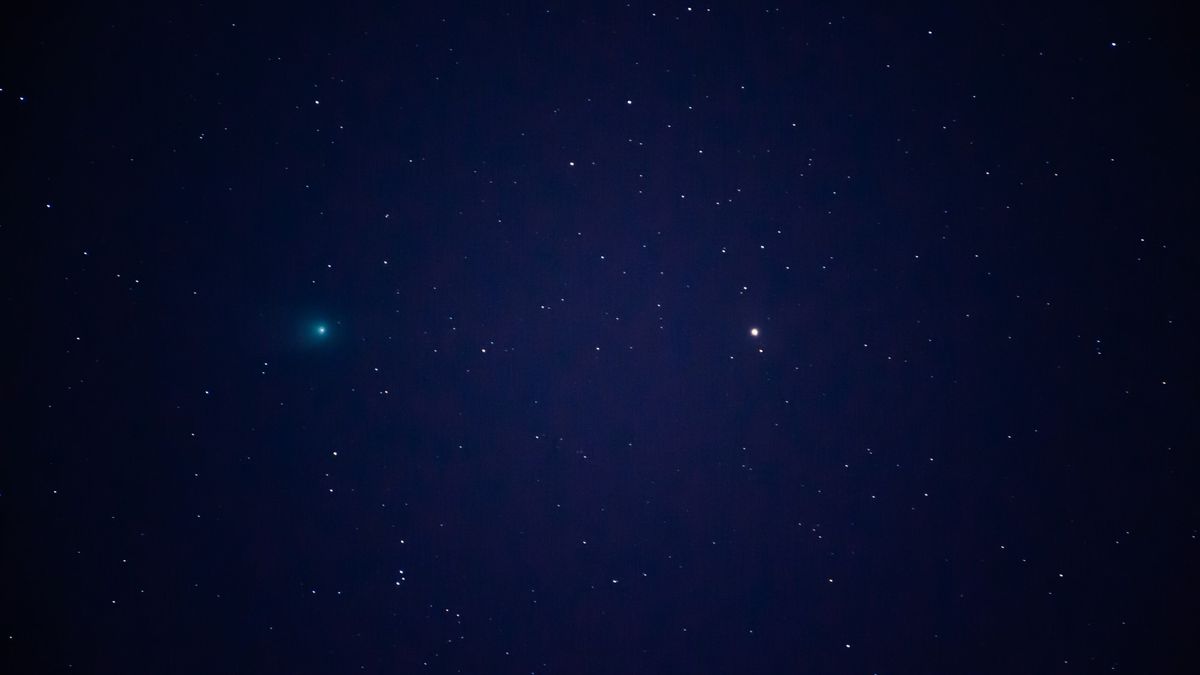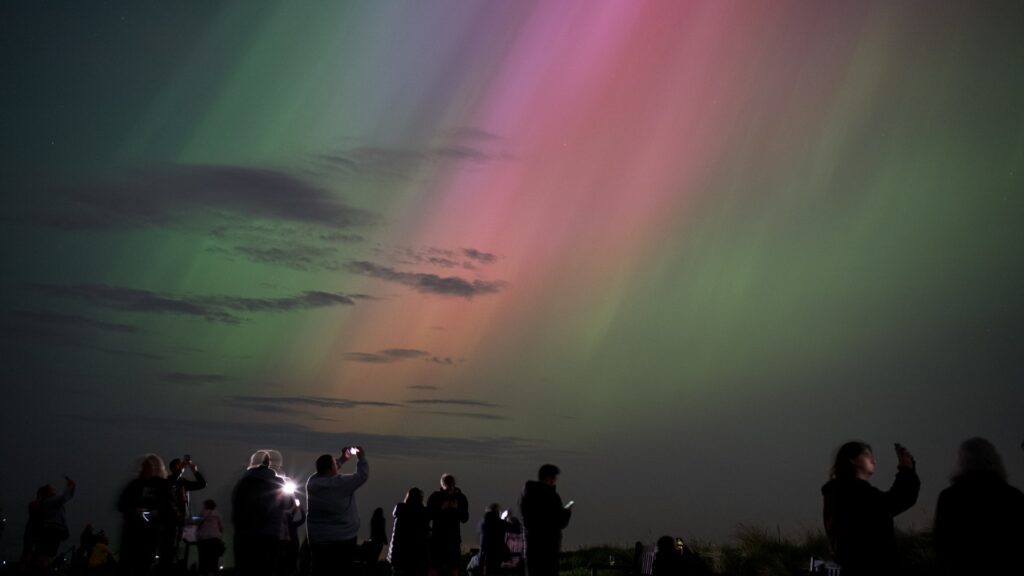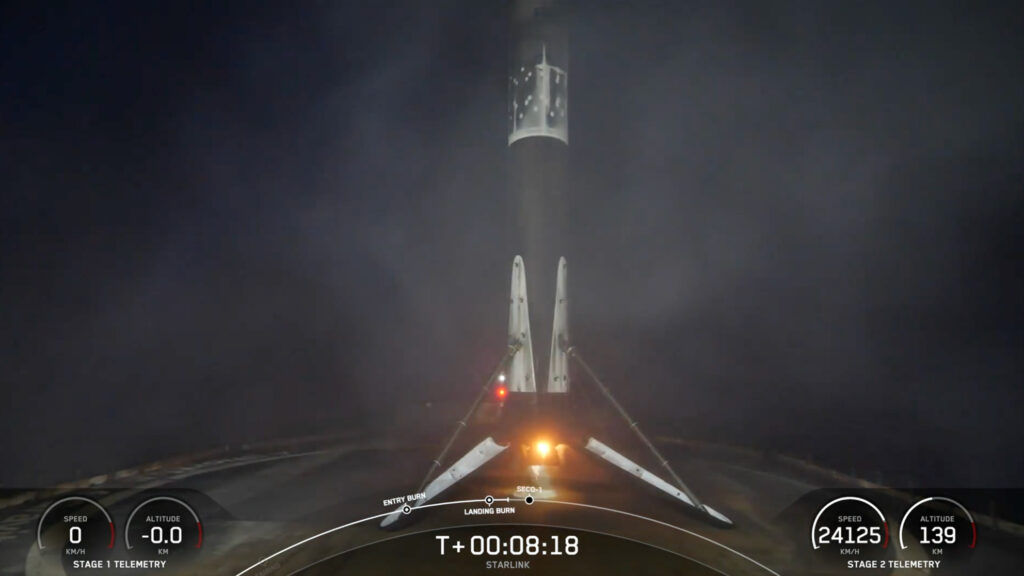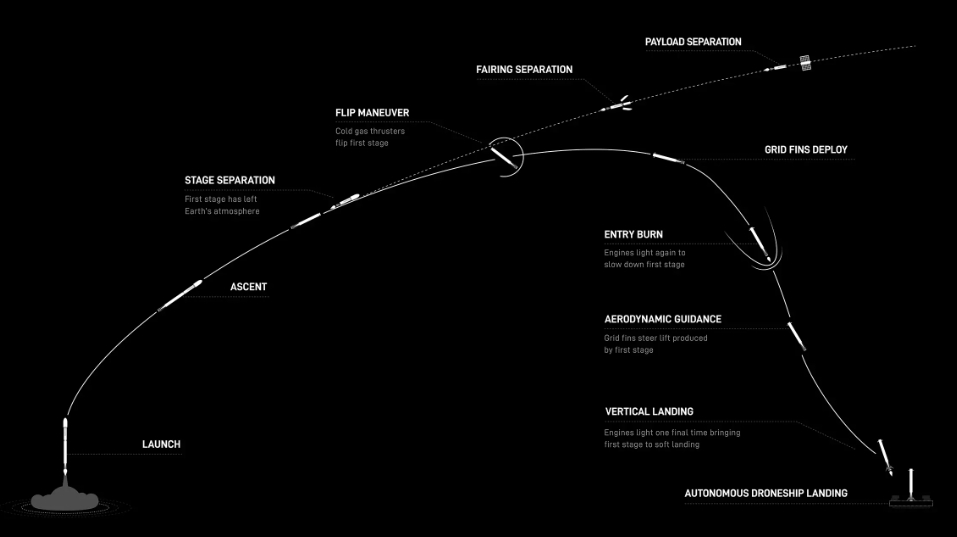
Comet C/2022 E3 (ZTF) is tantalizing to spot through a telescope, but what would it look like up close?
Scientists don’t have a way to get a spacecraft to the stunning green comet during its swing through the inner solar system — but next decade, they will, thanks to the European Space Agency’s (ESA) Comet Interceptor. That mission, scheduled to launch in 2029, will spend a few years perched nearly 1 million miles (1.5 million kilometers) away from Earth, waiting for an intriguing comet to venture deep enough into the inner solar system to fly past. But if Comet Interceptor were already in space, scientists might have sent it whizzing toward Comet C/2022 E3 (ZTF).
“The Comet ZTF, the currently brightest comet in the sky, is actually so far the most promising virtual target for Comet Interceptor,” Michael Kueppers, ESA’s Comet Interceptor study scientist, told a meeting of NASA’s Small Bodies Assessment Group on Wednesday (Jan. 26).
Related: Amazing photos of gorgeously green Comet C/2022 E3 (ZTF)
Kueppers said that the science team has been preparing for the mission by evaluating “virtual targets” — objects the Comet Interceptor team could consider visiting if the probe were already in space. Whatever comet ends up striking lucky will be subject to a thorough, albeit brief, inspection by the main spacecraft and two smaller probes.
Mission scientists are hoping to aim for an active comet that has never passed by the sun before. Such an object would hail from the icy Oort Cloud far beyond Pluto’s orbit; by catching an object on its first loop of the sun, scientists would be able to see pristine material responding to the sun’s heat.
Or, if Comet Interceptor is particularly lucky, scientists will spot another interstellar object, a successor to ‘Oumuamua and Comet Borisov that’s making a one-time jaunt through our solar system.
It’s an unusual situation for a mission to be in — although plenty of spacecraft gain additional targets after launch, Comet Interceptor will be in space before scientists ever see its prime target.
The spacecraft will hitch a ride with ESA’s Atmospheric Remote-sensing Infrared Exoplanet Large-survey (Ariel) mission, which will spend four years analyzing the atmospheres of as many as 1,000 exoplanets.
After launch, Comet Interceptor will head out to Earth-sun Lagrange point 2 (L2), the same deep-space “parking spot” that the James Webb Space Telescope orbits. At Lagrange points, gravitational tugs balance out, so it will be relatively cheap to keep the spacecraft at its station while waiting for scientists to identify a promising target. The team will need to decide its plans at least six months before heading out from L2 to rendezvous with a comet.
But imagine Comet Interceptor were already at its station in early March 2022, when scientists first spotted Comet C/2022 E3 (ZTF). Intrigued mission personnel might have started playing around with trajectories that Comet Interceptor could use to meet up with the object. They’d find that, if the spacecraft had headed out in late August, it could fly past the comet on Feb. 12, just a month after the snowball’s closest approach to the sun and a little less than a year after the object’s discovery.
But C/2022 E3 is not an ideal target, Kueppers noted. The team would need to prepare for departure pretty quickly, and the flyby would occur a little farther away from the sun than scientists would prefer. And whereas mission personnel are hoping to catch a comet that’s never visited the inner solar system before, C/2022 E3 has done so, albeit some 50,000 years ago.
“It’s probably not dynamically new,” Kueppers said. “It’s reasonably active, so we may take it, but it depends on the activity.”
And if this scenario played out during Comet Interceptor’s real mission, the departure preparation time likely wouldn’t be an issue. That’s thanks to the Vera Rubin Observatory in Chile, which will conduct a 10-year Legacy Survey of Space and Time (LSST) beginning in early 2025. LSST is expected to discover some 6 million solar system objects, and much of what it finds will come relatively early in that survey.
“The discovery is a little bit on the late side, but we are not worried about that because we expect those comets to be discovered significantly earlier with LSST,” Kueppers said of the virtual C/2022 E3 scenario.
Related stories:
The analysis highlights the sorts of decisions scientists will need to make during the Comet Interceptor mission. They’ll only get one shot, and they don’t know in advance what the solar system will send their way. If they’re too eager, they may end up missing out on a more intriguing target; if they’re too cautious, they may find themselves still at L2 several years after launch, running out of time with no target in sight. While the dream is an active, long-period comet, the team will have to see what happens, and whether an object like C/2022 E3 would snag a visit.
“Statistically, we expect that we will have a few candidate targets, not dozens of them,” Kueppers said. “We also cannot count on a dynamically new comet, so potentially we would use a comet like ZTF.”
Email Meghan Bartels at mbartels@space.com or follow her on Twitter @meghanbartels. Follow us on Twitter @Spacedotcom and on Facebook.



